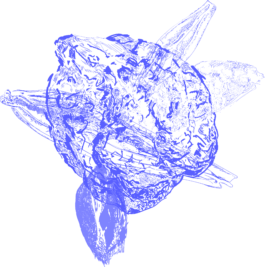hiiumaa grains
Chickpea
Family: Fabaceae
Genus: Cicer
Type species: Cicer arietinum
Buckwheat
Family: Polygonaceae
Genus: Fagopyrum
Type species: Fagopyrum esculentum
In the development of this project, it was important for me to meet Estonian farmers, to see their farms and fields and to receive some of their seeds, peasant if possible.
After a lot of research, Maria Muuk, Ekkm's head gardener, managed to find a farm on the island of Hiiumaa that was willing to receive us. It is Kaldamäe OÜ, which produces organic flours under a brandmark named Hiiu Jähu (comes from Hiiumaa and jähu (flour) in a local language dialect) run by Marys and her husband Even, which grows its own cereals and makes different types of organic flour. (fig. 1 - fig. 4)
They started their "agricultural career" in 2015 with Hereford and Angus cattle, by 2020 it was clear that there is no market for organic grass-feed beef (corona!) and they decided to try something new- organic flour making.
With Russia's invasion of Ukraine started in late February, at the time of our visit in mid-April, they had still not received the seeds for the current year. They mostly work there with certified seeds which they buy. So here, no peasant seeds, which could give farmers more financial and temporal autonomy. We were able to take apart a few bags of their own harvest and the remains of last year's seed in order to sow them at EKKM’s garden. (fig. 5 - fig. 7)
It was very interesting to have Marys' point of view on the subject of peasant seeds. There are as many ways to produce as there are farmers, it's a question of choice and many parameters have to be taken into account. We wrote a lot before we met, here are some of our exchanges and I really have to thank her for the time she took for that. (fig. 8 - fig. 9)
Gisèle: I would like to know what you think about the peasant (or inheritance) seed ? Is it possible for you to work with them? Are you bothered to buy seeds? How do you feel about the so-called Patent of Life?
Marys: It is certainly important to preserve old and historical varieties. This is probably done by the Jõgeva plant breeding, the seed union or some of the farmers who have taken it to heart. Does everyone arrive and have to do it? Maybe not. But whoever sees and feels that he/she has time for this, among other activities, it’s definitely very good.
Probably something has been lost in the translation, but the seeds still have to be bought, because, unfortunately, in addition to small-scale production itself, it is quite difficult to engage in full-scale breeding. And if a variety with good qualities results from this breeding, it is still wise to patent or register it. I do not know exactly how this process is going, because we have not done it. (fig. 10)
If a farm's aim is to maximize yields, then it is vital - especially in organic farming, that plants are resistant to weather, disease and pests and are bred for the area in which they grow. After all, in addition to foreign varieties, there are also varieties of cereals bred in Estonia that are perfectly available. By sowing your own seed, it is still difficult to keep these so-called 'breeding traits' well maintained and the aforementioned conditions start to lose their ability (yield, disease resistance, etc.). Also, not every farmer can probably guarantee that their beautiful grain is not cross-pollinated or otherwise "contaminated" in some way (e.g. wrong pre-germ selection, etc.) and once the major certification process is done, it makes sense to sell it. Nobody is going to do it for a few tons of their own seed. Already the drying quantities are higher, the need for sorting etc. is over, the costs are so high that it is cheaper to buy the right amount of seed.
Marys also mentioned the Soviet period in our exchanges... (fig. 11)
Marys: I briefly consulted my grandmother about seed production in the Soviet era, she was a sovkhoz** department head and agronomist, but she was not directly involved in seed ordering for the most part. There were special farms for seed growing, which got their elite seed from Jõgeva. They received 1st class seed or 2nd class seed, which they sowed. They also sown their own class 2 seed from their own crop of class 1 seed. The 3rd class seed from their own harvest went to animal feed. Fields sown with better grain were inspected by the agri-co-operative, checking for weeds, germination and 1000 seed weight (as today, a similar certification process apparently). The indicators were checked both at harvest in the autumn and in the spring before sowing, and the grain was dried separately. Certain cereals were not allowed near the fields and the first runs (rounds) of the combine were also always used for animal feed to ensure the best quality seed.
The Lülle farm on the island on Saaremaa was engaged in the cultivation of all Estonian carrot seed, the variety being Jõgeva Nantes. Organic seed was obtained from Jõgeva and the fields were strictly controlled, the quality seed was sold on to other collective farms/soviet farms. Carrots sown in the spring were picked up in the autumn, inspected and visually unsuitable carrots were returned to the animals. The carrots were left with a 3cm stalk and were piled in sand for the winter. At the beginning of April, the carrots were taken outside under shade and covered with twigs to acclimatise to the weather, and planted again in May, standing upright in sandy soil. The so-called second year carrots would begin to flower and produce a sardine flower, which was harvested by hand. It was dried in the shade, sorted and the resulting seed sold off to other farms. You can probably get better information about all this from the Jõgeva plant breeding centre. (fig. 12)
**sovkhoz: A Soviet farm or Sovkhoz (lit. Soviets (Soviet Economy), abbreviation of советское хозяйство; angl. Soviet farm, Eng. state farm; sovkhoz, German. Sowjetgut; Sowchose, fr. ferme d'Etat; sovkhoze) - a state agricultural enterprise in the USSR and several other countries of the so-called "socialist bloc" in the 20th century. The first sovkhozes in Soviet Russia began to be established as early as the end of 1917 on lands confiscated from the CPSU. The land and means of production of a sovkhoz were owned by the state, staffed by salaried specialists and workers, and managed by a director appointed by a higher organ of state power. It had an independent balance sheet and legal personality. It existed throughout the USSR as a form of organisation of agricultural enterprises.
https://vesture.eu/Padomju_saimniec%C4%ABba
Note: Marys's texts were written in Estonian. The Sovhoz’s definition comes from a latvian website. Both were freely translated by me in English.
(fig. 13)
Against the Grain, 2022 -
In-situ installation, EKKM, Tallinn
Surface approx. 60 m2, 35 tons of topsoil
Field sown with twelve types of bread cereals from wheat, rye, oats, barley, lentil, chickpea, certified and farmer (heirloom) seeds from Estonia, Lithuania and France
Project by Gisèle Gonon
Graphic Design by Robin Siimann
Chickpea
Family: Fabaceae
Genus: Cicer
Type species: Cicer arietinum
Grain of Chickpea and Ears of Buckwheat
digital drawings, Gisèle Gonon, 2022
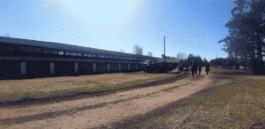
(fig. 1) Hiiu Jähu, entrance of Marys and Even’s farm, Hiiumaa, Gisèle Gonon, 2022

(fig. 2) Visit of Hiiu Jähu, with the group of the community gardeners of Ekkm’s and Marys, Hiiumaa, Production rooms. Gisèle Gonon, 2022
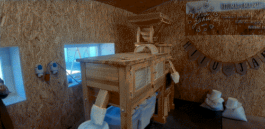
(fig. 3) Hiiu Jähu's mill, Gisèle Gonon, 2022
The flour mill. Austrian origin stone mill that uses stones to grain the crops. The benefit is that it does not heat the flour during process.
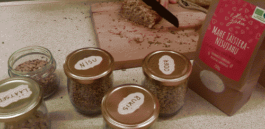
(fig. 4) Samples of grains, at the background there is soda bread made of the same flour. Gisèle Gonon, Hiiumaa, 2022
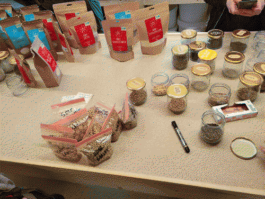
(fig. 5) Store-ready organic wholegrain wheat flour package. Gisèle Gonon, Hiiumaa, 2022
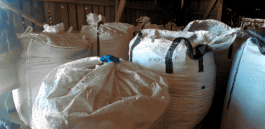
(fig. 6) Visit of Hiiu Jähu, view of the barn and the grain bags, Hiiumaa, Gisèle Gonon, 2022
"Those are more cover crops (mesikas). We just wanted to see, if we can harvest our own mesikas and use it again, bus it is not the best selection in organic farming". Marys
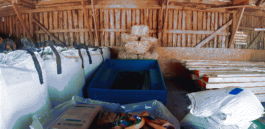
(fig. 7) Visit of Hiiu Jähu view of the barn and the grain bags, Hiiumaa, Gisèle Gonon, 2022
'The back kitchen of a countryside farmest shed. Building materials, cement for constructions, reed blocks for open farm days, old trailer is just a cool renovating project for wintertime.". Marys
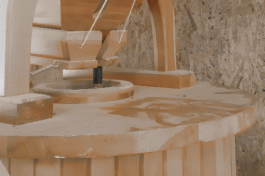
(fig. 8) Hiiu Jähu's mill, traditional stone mill, Gisèle Gonon, 2022
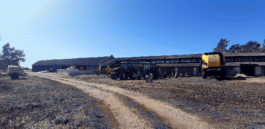
(fig. 9) Visit of Hiiu Jähu, farm equipment and buildings, Gisèle Gonon, 2022
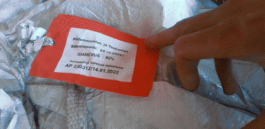
(fig. 10) Visit of Hiiu Jähu, bag of seeds, Gisèle Gonon, 2022
"Certified seed label from the Estonian Agriculture and Food Board gives information about the seeds batch, germination and on the other side there is information when the tests are made, weight of the bag and 1000 seeds and so on". Marys
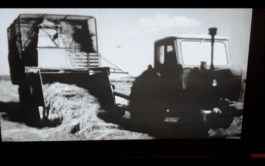
(fig. 11) Picture made during my residency research with the Tallinn Art Hall, ‘The Art of Being Good, Estonian Agricultural Museum in Tartu, 2021
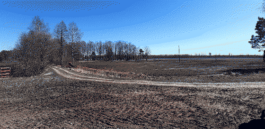
(fig. 12) Marys’ land in Hiiumaa, Gisèle Gonon, 2022
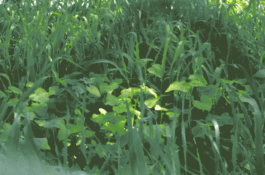
(fig. 13) Gisèle Gonon, Against the Grain, 2022
In-situ installation for the Museum of Contemporary Art EKKM in Estonia
Fields sown with twelve types of bread cereals from Estonia, Lithuania, France.
Detail, Buckwheat, Ekkm July 2022
Hiiumaa grains
Chickpea
Family: Fabaceae
Genus: Cicer
Type species: Cicer arietinum
Grain of Chickpea and Ears of Buckwheat, digital drawings, Gisèle Gonon, 2022
Buckwheat
Family: Polygonaceae
Genus: Fagopyrum
Type species: Fagopyrum esculentum
In the development of this project, it was important for me to meet Estonian farmers, to see their farms and fields and to receive some of their seeds, peasant if possible.
After a lot of research, Maria Muuk, Ekkm's head gardener, managed to find a farm on the island of Hiiumaa that was willing to receive us. It is Kaldamäe OÜ, which produces organic flours under a brandmark named Hiiu Jähu (comes from Hiiumaa and jähu (flour) in a local language dialect) run by Marys and her husband Even, which grows its own cereals and makes different types of organic flour.
They started their "agricultural career" in 2015 with Hereford and Angus cattle, by 2020 it was clear that there is no market for organic grass-feed beef (corona!) and they decided to try something new- organic flour making.

Hiiu Jähu, entrance of Marys and Even’s farm, Hiiumaa, Gisèle Gonon, 2022

Visit of Hiiu Jähu, with the group of the community gardeners of Ekkm’s and Marys, Hiiumaa, Production rooms. Gisèle Gonon, 2022

Hiiu Jähu's mill, Gisèle Gonon, 2022
The flour mill. Austrian origin stone mill that uses stones to grain the crops. The benefit is that it does not heat the flour during process.

Samples of grains, at the background there is soda bread made of the same flour. Gisèle Gonon, Hiiumaa, 2022
With Russia's invasion of Ukraine started in late February, at the time of our visit in mid-April, they had still not received the seeds for the current year. They mostly work there with certified seeds which they buy. So here, no peasant seeds, which could give farmers more financial and temporal autonomy. We were able to take apart a few bags of their own harvest and the remains of last year's seed in order to sow them at EKKM’s garden.

Store-ready organic wholegrain wheat flour package. Gisèle Gonon, Hiiumaa, 2022

Visit of Hiiu Jähu, view of the barn and the grain bags, Hiiumaa, Gisèle Gonon, 2022
"Those are more cover crops (mesikas). We just wanted to see, if we can harvest our own mesikas and use it again, bus it is not the best selection in organic farming". Marys

Visit of Hiiu Jähu view of the barn and the grain bags, Hiiumaa, Gisèle Gonon, 2022
'The back kitchen of a countryside farmest shed. Building materials, cement for constructions, reed blocks for open farm days, old trailer is just a cool renovating project for wintertime.". Marys
It was very interesting to have Marys' point of view on the subject of peasant seeds. There are as many ways to produce as there are farmers, it's a question of choice and many parameters have to be taken into account. We wrote a lot before we met, here are some of our exchanges and I really have to thank her for the time she took for that.
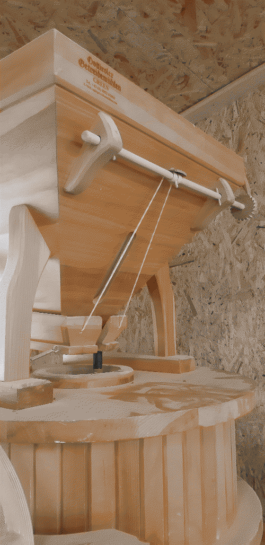
Hiiu Jähu's mill, traditional stone mill, Gisèle Gonon, 2022

Visit of Hiiu Jähu, farm equipment and buildings, Gisèle Gonon, 2022
Gisèle: I would like to know what you think about the peasant (or inheritance) seed ? Is it possible for you to work with them? Are you bothered to buy seeds? How do you feel about the so-called Patent of Life?
Marys: It is certainly important to preserve old and historical varieties. This is probably done by the Jõgeva plant breeding, the seed union or some of the farmers who have taken it to heart. Does everyone arrive and have to do it? Maybe not. But whoever sees and feels that he/she has time for this, among other activities, it’s definitely very good.
Probably something has been lost in the translation, but the seeds still have to be bought, because, unfortunately, in addition to small-scale production itself, it is quite difficult to engage in full-scale breeding. And if a variety with good qualities results from this breeding, it is still wise to patent or register it. I do not know exactly how this process is going, because we have not done it.

Visit of Hiiu Jähu, bag of seeds, Gisèle Gonon, 2022
"Certified seed label from the Estonian Agriculture and Food Board gives information about the seeds batch, germination and on the other side there is information when the tests are made, weight of the bag and 1000 seeds and so on". Marys
(...)
If a farm's aim is to maximize yields, then it is vital - especially in organic farming, that plants are resistant to weather, disease and pests and are bred for the area in which they grow. After all, in addition to foreign varieties, there are also varieties of cereals bred in Estonia that are perfectly available. By sowing your own seed, it is still difficult to keep these so-called 'breeding traits' well maintained and the aforementioned conditions start to lose their ability (yield, disease resistance, etc.). Also, not every farmer can probably guarantee that their beautiful grain is not cross-pollinated or otherwise "contaminated" in some way (e.g. wrong pre-germ selection, etc.) and once the major certification process is done, it makes sense to sell it. Nobody is going to do it for a few tons of their own seed. Already the drying quantities are higher, the need for sorting etc. is over, the costs are so high that it is cheaper to buy the right amount of seed.
Marys also mentioned the Soviet period in our exchanges...

Picture made during my residency research with the Tallinn Art Hall, ‘The Art of Being Good, Estonian Agricultural Museum in Tartu, 2021
Marys: I briefly consulted my grandmother about seed production in the Soviet era, she was a sovkhoz** department head and agronomist, but she was not directly involved in seed ordering for the most part. There were special farms for seed growing, which got their elite seed from Jõgeva. They received 1st class seed or 2nd class seed, which they sowed. They also sown their own class 2 seed from their own crop of class 1 seed. The 3rd class seed from their own harvest went to animal feed. Fields sown with better grain were inspected by the agri-co-operative, checking for weeds, germination and 1000 seed weight (as today, a similar certification process apparently). The indicators were checked both at harvest in the autumn and in the spring before sowing, and the grain was dried separately. Certain cereals were not allowed near the fields and the first runs (rounds) of the combine were also always used for animal feed to ensure the best quality seed.
The Lülle farm on the island on Saaremaa was engaged in the cultivation of all Estonian carrot seed, the variety being Jõgeva Nantes. Organic seed was obtained from Jõgeva and the fields were strictly controlled, the quality seed was sold on to other collective farms/soviet farms. Carrots sown in the spring were picked up in the autumn, inspected and visually unsuitable carrots were returned to the animals. The carrots were left with a 3cm stalk and were piled in sand for the winter. At the beginning of April, the carrots were taken outside under shade and covered with twigs to acclimatise to the weather, and planted again in May, standing upright in sandy soil. The so-called second year carrots would begin to flower and produce a sardine flower, which was harvested by hand. It was dried in the shade, sorted and the resulting seed sold off to other farms. You can probably get better information about all this from the Jõgeva plant breeding centre.

Marys’ land in Hiiumaa, Gisèle Gonon, 2022
**sovkhoz: A Soviet farm or Sovkhoz (lit. Soviets (Soviet Economy), abbreviation of советское хозяйство; angl. Soviet farm, Eng. state farm; sovkhoz, German. Sowjetgut; Sowchose, fr. ferme d'Etat; sovkhoze) - a state agricultural enterprise in the USSR and several other countries of the so-called "socialist bloc" in the 20th century. The first sovkhozes in Soviet Russia began to be established as early as the end of 1917 on lands confiscated from the CPSU. The land and means of production of a sovkhoz were owned by the state, staffed by salaried specialists and workers, and managed by a director appointed by a higher organ of state power. It had an independent balance sheet and legal personality. It existed throughout the USSR as a form of organisation of agricultural enterprises.
https://vesture.eu/Padomju_saimniec%C4%ABba
Note: Marys's texts were written in Estonian. The Sovhoz’s definition comes from a latvian website. Both were freely translated by me in English.

Gisèle Gonon, Against the Grain, 2022
In-situ installation for the Museum of Contemporary Art EKKM in Estonia
Fields sown with twelve types of bread cereals from Estonia, Lithuania, France.
Detail, Buckwheat, Ekkm July 2022
Against the Grain, 2022 -
In-situ installation, EKKM, Tallinn
Surface approx. 60 m2, 35 tons of topsoil
Field sown with twelve types of bread cereals from wheat, rye, oats, barley, lentil, chickpea, certified and farmer (heirloom) seeds from Estonia, Lithuania and France
Project by Gisèle Gonon
Graphic Design by Robin Siimann
Go to the next seed and scan the corresponding code to get more infos :)
